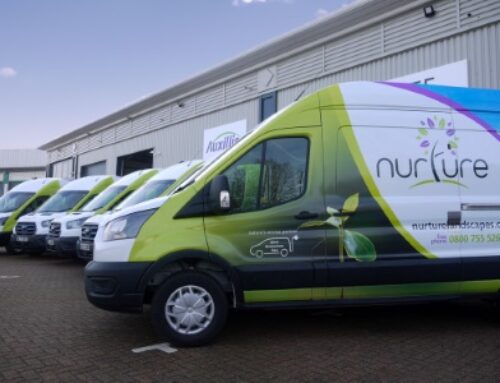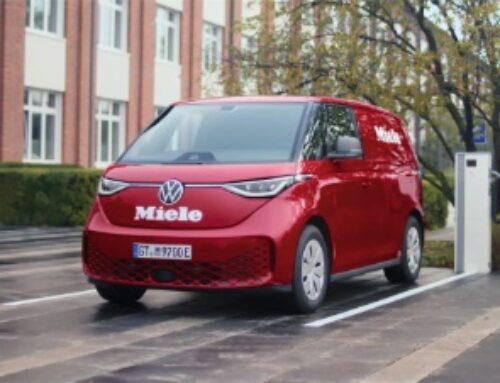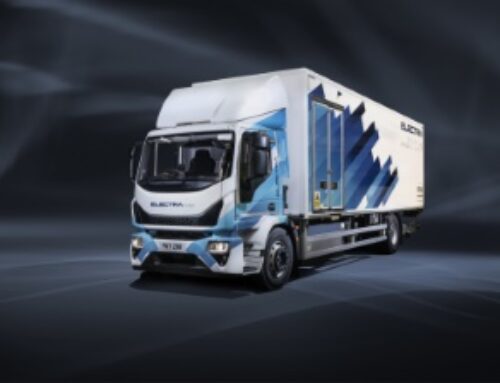Do electric vehicles need custom steering parts?
 Kostas Poulios, principal design and development engineer at steering system manufacturer Pailton Engineering, discusses the pros and cons of optimising components for commercial vehicles
Kostas Poulios, principal design and development engineer at steering system manufacturer Pailton Engineering, discusses the pros and cons of optimising components for commercial vehicles
The race to develop electric vehicles for the commercial vehicle market is moving rapidly. According to research from StartUs Insights, there are approximately 753 startups and emerging companies developing electric vehicles, with 257 in the US alone. Will the key players stick with conventional steering components in their vehicle design, or will they look for benefits in customisation?
The key difference between electric vehicles (EVs) and their combustion counterparts is their method of propulsion. However, there are many other areas where the vehicles are much alike.
The steering parts of an electric van are in most respects identical to those you would find in a diesel van. In fact, when a customer approaches Pailton with an enquiry for steering parts, they almost always begin by asking for standard, off-the-shelf options, regardless of whether they are building an EV or something else.
Off-the-shelf versus customised
However, if an EV manufacturer designed and built their vehicle using these standard parts, they might return and ask: can you make this part lighter? At this point, you now require a custom part.
Naturally, customisation comes with additional cost, so what are the benefits? For EV makers, the key requirement is weight reduction. Other benefits include decreased size, which might be useful with a reduced space envelope, or alternative interface options, which allow the parts to marry better with other elements of the design or components related to the steering system.
Traditional steering components might be over-engineered. For example, if a component is engineered to carry a load of two tonnes, but it is being used for a small delivery van and will be subject to a load that is significantly lower than this, you can optimise the design to reduce the material in the component and therefore the weight.
Changing the material type is normally more problematic. With safety critical parts, steel is almost always the best option, from both a safety and a cost point of view.
Changing steering components in this way will save a few grams here and there, so we are talking relatively minor gains in terms of the overall weight of the vehicle. For now, EV manufacturers primarily focus on things like the material from which the body is made as the best means of reducing weight. Arrival, for example, relies on composites.
However, things can change rapidly. It is quite likely that, having achieved maximum weight reductions through other areas of the vehicle, manufacturers will begin to explore alternatives such as steering and suspension parts.
Once the low hanging fruit is gone, those extra grams gained from a custom bevel box begin to look a bit more juicy. At that stage we might also see parts suppliers begin to offer lighter components, specifically designed with EVs in mind, as standard.
Steering the way to the future
At Pailton Engineering, we’ve been exploring how our steering parts can be optimised for electric vehicles. Fundamentally, the design of steering parts for commercial vehicles and heavy vehicles hasn’t changed significantly for many years. However, maybe we start looking at hollow shafts, thin wall tubes or different materials for the yokes?
With so many enquiries in this area, we’ve been working on creating a standard package for EVs. In future, when a customer enquires about parts, they might find that suppliers can offer lighter parts that are specifically designed for EVs as standard, rather than having to start with bulkier parts that were originally designed for diesel vehicles, and then request optimisations at a later stage.
Work on this is currently at a preliminary stage, with more than one option on the table. All the parts are similar to what you would expect with traditional components, but are optimised to reduce space and weight.
The steering column, for example, has some features removed and is made from lighter components. It is smaller and lighter than your conventional column. A key challenge is the lack of agreement over what should be standard.
We also need to factor in different driver positions, ensuring we meet all the adjustments rates. Finally, we have to consider the ancillaries, such as the indicator switch, light switch and a smart steering wheel to link with a phone or radio.
An area where we expect continuing strong demand is for electric last mile delivery vehicles. Here the benefits of electrification are more apparent. In urban areas where there are emission free zones, the commercial incentives of switching to electric are greater. At the same time, it is much easier to electrify small delivery vans than heavy goods vehicles.
We don’t know how any given technology will develop and a lot can change in a relatively short period of time. How many of those 753 startups will be making electric vehicles ten years from now? Although we don’t have answers to these questions, it is quite likely that EV makers will build their vehicles using different steering parts in future.
Pailton Engineering specialises in the design and manufacture of steering parts and full steering systems for commercial vehicles, including electric last mile delivery vehicles.
More information is available via the website.










